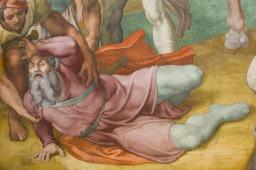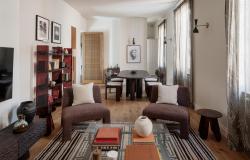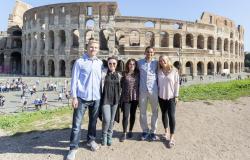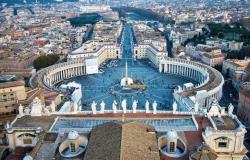The Vatican has spent over three million euros restoring the last frescoes ever painted by Michelangelo which may have unveiled a new self-portrait by the Renaissance genius.
Restorers spent seven years cleaning up the frescoes of the Conversion of Saul and the Crucifixion of St Peter that Michelangelo painted between 1542 and 1550 in the Pauline Chapel inside the Vatican.
The massive works flank each side of the chapel, which is strictly off limits to the public and is usually only used by the pope and those closest to him for private masses.
Arnold Nesselrath, the art historian in charge of the operation, said the cleaning and restoration work on the frescoes had brought back to light the walls, turrets and basilicas of the city of Damascus, which had been turned into a sort of ''Romanesque nativity scene'' during another restoration in 1934.
The Vatican's chief restorer, Maurizio De Luca, meanwhile claimed that a self-portrait of Michelangelo can be spotted among the crowd in the Crucifixion of St Peter.
''It's an extraordinary and moving discovery,'' he told Corriere della Sera.
''The self-portrait is one of three knights on the left-hand top corner of the fresco who wears a lapis lazuli blue turban and in his features is very similar to other known portraits of Michelangelo,'' he said.
Michelangelo included another self-portrait in the Sistine Chapel, where his face is thought to feature in the flayed skin of St Bartholomew, and portraits of him also exist by other artists.
Vatican Museums Director Antonio Paolucci, a former culture minister, said the Vatican was lucky to be able to carry out such restoration work when many historic Italian restoration institutes were in ''serious crisis'' for a number of reasons including lack of resources.
''Fortunately, in this 44-hectare little state, restoration is prospering and giving excellent results such as this in the Pauline Chapel,'' he said.
Commissioned by Pope Paul III in 1537 and completed in 1540, the chapel's design and construction was overseen by Antonio da Sangallo the Younger.
Michelangelo had decorated most of the Sistine Chapel 29 years earlier but had returned to the site to add The Last Judgment, which he finished in 1541.
A favourite of the pope and considered a master frescoist, he was the natural choice for the Pauline Chapel, which he started work on the following year and completed at the age of 75 in 1550.
He lived another 14 years working as chief architect on St Peter's Basilica but the Pauline Chapel works were his last ever frescos.
He was criticised for the frescoes at the time for their nudity, the absence of nails in the hands and feet of St Peter on the cross (which were added at a later date), and for giving St Paul the face of too old a man.








